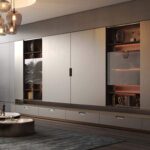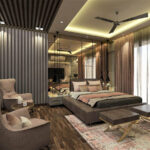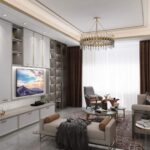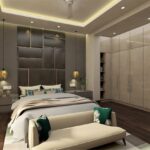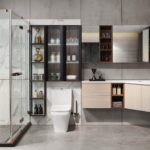Energy Efficient Interior Design: 5 Ways To Incorporate Aesthetics With Sustainability
Overview
Elevate your spaces sustainably! Explore energy-efficient technologies in interior design—stylish, eco-friendly, and perfect for greener, chic living.
In the dynamic realm of interior design, where form meets function, there’s a rising star demanding our attention: Energy Efficiency. Beyond being a mere buzzword, it stands as a game-changer for both homeowners and businesses. This blog will navigate the transformative influence of energy-efficient technologies on interior design, exploring not just visual appeal but tangible benefits that extend to your budget.
Visualize a space where interior design not only captures the eye but also aligns seamlessly with the environment. Energy efficiency in interior design isn’t just a passing trend; it signifies a commitment to sustainability and conscientious living. As professionals in the field of interior design, your role extends beyond crafting visually appealing spaces; you’re at the forefront of shaping a design future that aligns harmoniously with our planet.
Incorporating energy-efficient elements into your designs doesn’t equate to compromising style. On the contrary, it’s about elevating your creativity by seamlessly integrating technology that enhances visual appeal and contributes to a greener, more sustainable world. Let’s talk numbers – the ones that bring smiles to homeowners’ faces and propel businesses toward prosperity. Reducing utility bills isn’t just a financial victory; it’s a strategic move toward long-term savings.
For homeowners, it translates to increased disposable income, while businesses witness heightened profitability. It’s not merely about cost-cutting; it’s an investment that pays dividends over time. Consider this: a thoughtfully designed interior significantly curtails energy consumption, resulting in substantial savings on monthly bills. Whether you’re stylizing a cozy residence or transforming a bustling business space, the positive impact of energy-efficient design reaches beyond aesthetics.
Now, let’s delve into the thrilling world of energy-efficient technologies reshaping the landscape of interior design. Picture LED lighting systems not only illuminate spaces with a warm glow but also drastically reduce energy consumption. Envision smart home technologies seamlessly integrated into your designs, granting homeowners control over their environment with a simple touch.
We’ll explore sustainable materials and finishes that not only contribute to a healthier living space but also underscore your commitment to eco-friendly design practices. From HVAC systems optimizing energy usage to window treatments balancing natural light and insulation – the possibilities are as expansive as your creative vision. It’s more than creating visually stunning spaces; it’s about forging a future where style and sustainability walk hand in hand, proving that interior design choices can be both visually striking and environmentally responsible.
Illuminating Efficiency: Energy-Efficient Lighting Solutions
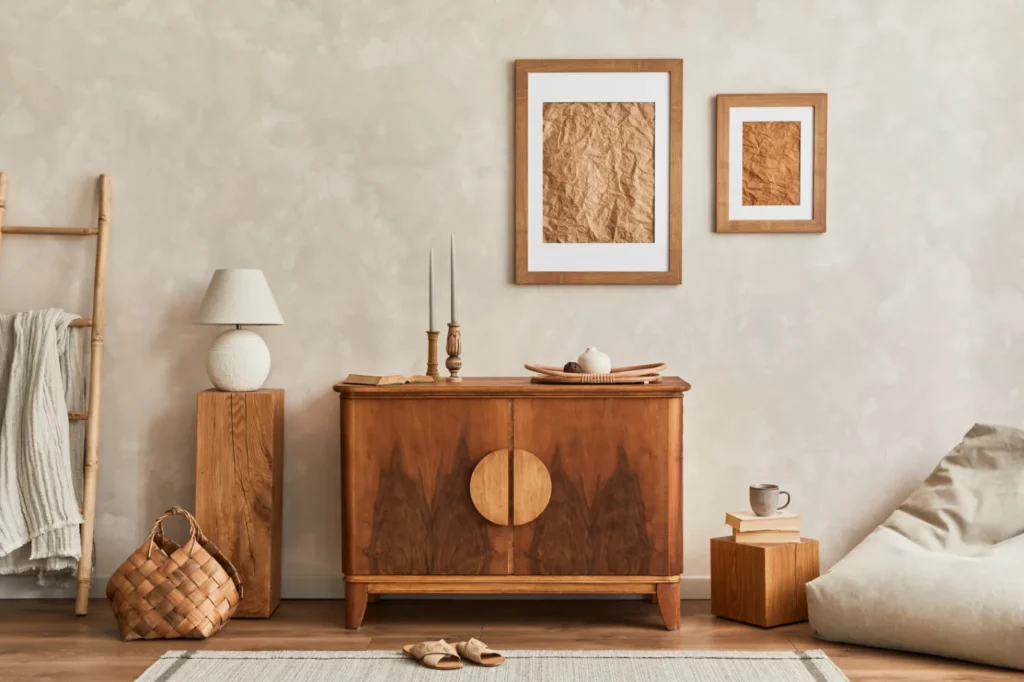
In the dynamic landscape of interior design, lighting serves as an unsung hero, capable of transforming spaces. As we propel ourselves into the future, the spotlight is firmly on energy-efficient lighting solutions, chosen not only for their economic benefits but also for their seamless integration into diverse design concepts.
LED Lighting Systems: Bridging Efficiency And Interior Design Versatility
Efficient Savings and Energy Conservation: The era of energy-devouring incandescent bulbs has given way to the reign of LED lighting systems. These marvels stand as unrivaled champions of energy efficiency, providing illumination with a remarkable reduction in energy consumption.
Consider a lighting solution that trims up to 80% off traditional energy costs, offering not just environmental benefits but also substantial long-term savings for both residential and commercial interior designs. Recent research showcases a 30% reduction in monthly electricity expenses for businesses making the switch to LED lighting, underscoring the tangible financial advantages.
Design Flexibility with Versatile Applications: LED lights transcend efficiency; they introduce a new level of versatility to the designer’s toolkit. With a plethora of shapes, sizes, and color temperatures, LED lighting systems empower designers to craft atmospheres ranging from warm and intimate to vibrant and energizing.
Whether pursuing a minimalist aesthetic or a lively, eclectic ambiance, LED lights offer the flexibility to manifest your interior design vision. In a contemporary residential setting, strategically placed LED strips can accentuate architectural features, delivering both a visually stunning and energy-efficient ambiance.
Smart Lighting Controls: Effortless Efficiency With Stylish Automation
Automated Precision for Energy Optimization: Welcome to the realm of smart lighting controls, where technology seamlessly integrates with efficiency. Smart lighting systems bring forth automation that transcends simple on/off switches. Picture lights adjusting brightness based on natural daylight or sensors ensuring lights only activate when necessary.
These features not only optimize energy consumption but also contribute to sustainable and eco-friendly interior design. Within a commercial office environment, the implementation of smart lighting controls tailored to employee schedules and natural light patterns resulted in a substantial 25% reduction in overall energy usage, fostering a more sustainable and cost-effective workspace.
Harmonious Integration with Interior Design Aesthetics: Contrary to the clunky, utilitarian devices of yesteryear, modern smart lighting controls are meticulously designed with aesthetics in mind. These sleek, minimalist controls seamlessly merge with your interior design, elevating the overall visual appeal.
Envision a lighting system that not only intelligently responds to your needs but also enhances the aesthetic language of your interiors. For instance, In a residential project, the discreet integration of smart lighting controls allowed homeowners to effortlessly manage the ambiance while preserving the elegance of the space.
Crafting Conscious Interiors With Sustainable Materials And Finishes
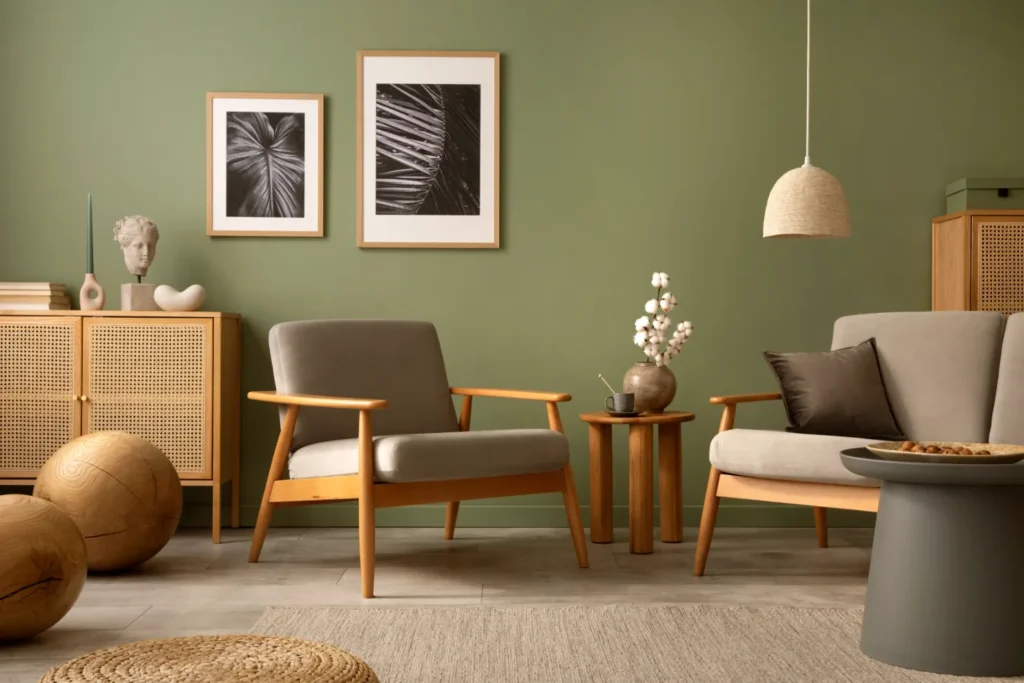
Within interior design, our decisions transcend mere aesthetics, penetrating the very essence of our surroundings. Sustainable materials and finishes emerge as pivotal components, valued not only for their visual allure but for the profound influence they wield over the environment and the well-being of those who inhabit these spaces.
The Significance Of Choosing Eco-Friendly Materials
Environmental Impact: Undoubtedly, the significance of opting for eco-friendly materials in interior design cannot be overstressed. Conventional design choices often exact an environmental toll, contributing to deforestation, resource depletion, and an augmented carbon footprint. The decision to embrace sustainable materials is a conscious stride towards mitigating these adverse effects. It’s a recognition of the symbiotic relationship between interior design and the environment, ensuring that our creative endeavors leave behind a positive, enduring legacy.
Health Benefits for Inhabitants: Beyond environmental concerns, the health implications for those inhabiting these spaces are paramount. Conventional materials, laden with harmful chemicals, can deteriorate indoor air quality, precipitating a spectrum of health issues. Conversely, the choice of eco-friendly materials fosters a healthier living environment. This holds particular significance in homes and commercial spaces, where occupants invest substantial periods.
Exemplifying Sustainable Materials And Finishes
Revitalizing with Recycled and Reclaimed Materials: In the pursuit of sustainability, recycled and reclaimed materials emerge as exemplars of conscientious design. Materials like reclaimed wood, salvaged metal, or recycled glass diminish the demand for new resources and bestow a distinctive character upon your designs.
Envision a conference table fashioned from reclaimed wood, narrating a tale of its past life and contributing to a circular economy in interior design. Introducing recycled metal accents into the interior of a restaurant not only infused an industrial-chic ambiance but also diverted waste from landfills, underscoring a steadfast commitment to sustainability.
Harmonizing with Low VOC Paints and Finishes: The pursuit of sustainability extends to the very surfaces that envelop us. Traditional paints and finishes often release Volatile Organic Compounds (VOCs) into the air, contributing to indoor air pollution. Opting for low-VOC paints and finishes mitigates harmful emissions, cultivating a healthier indoor environment.
It’s a nuanced yet impactful choice that augments the well-being of occupants and aligns with our collective responsibility to the planet. In a residential endeavor, the incorporation of low VOC paints not only contributed to enhancing indoor air quality but also resonated with the homeowners’ dedication to fostering a secure and sustainable living space.
Synthesis Of Smart Home Tech: Crafting Intelligent Living Spaces
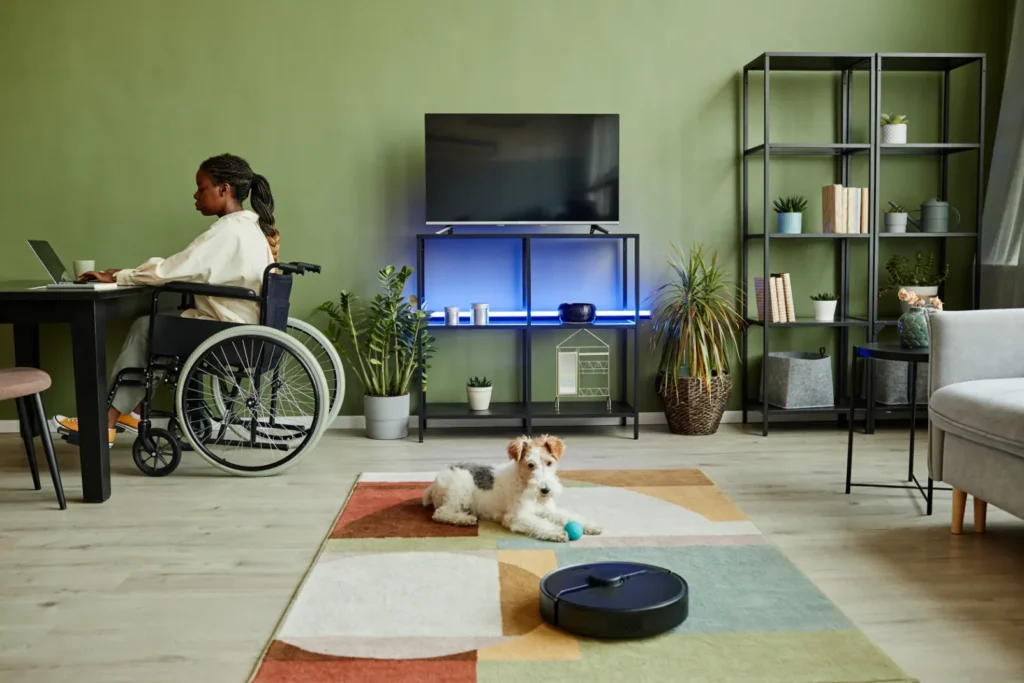
In the present milieu of interior design, the convergence of style and technology is birthing a new wave of smart home innovations. These advancements don’t just uplift the ambiance but also play a pivotal role in optimizing energy usage. Let’s plunge into the universe of smart home technology, dissecting its key components and how seamlessly they meld into the very essence of interior design.
Smart Home Technologies At A Glance
Thermostats: Revamping home climate control, smart thermostats mark a paradigm shift. Diverging from traditional counterparts that adhere to fixed schedules, these smart thermostats dynamically adapt to user behavior and environmental shifts. Envision a thermostat that learns your preferences, tweaking the temperature for optimal comfort and energy efficiency. These devices go beyond climate control; they epitomize living tailored to individual needs.
Energy-Efficient Appliances: The evolution of smart home technology extends gracefully to appliances engineered for energy efficiency. Smart refrigerators, washing machines, and dishwashers come equipped with sensors and algorithms designed to precisely adjust their usage patterns. This translates to reduced energy consumption without compromising functionality. Picture a kitchen where appliances seamlessly communicate, running during off-peak energy hours, contributing to both energy savings and convenience.
Integration Of Smart Technologies Into Interior Design
Harmonious Fusion with Design Elements: A standout feature of smart home technology lies in its ability to seamlessly fuse with diverse interior design elements. No longer confined to mere gadgetry, smart devices are meticulously crafted with aesthetics in mind. Picture a thermostat mirroring the sleek lines of minimalist decor or a smart speaker doubling as an elegant art piece.
Including these technologies doesn’t disrupt design; rather, it enriches and elevates it. Envision a living room where smart lighting seamlessly melds with the design, responding dynamically to natural light levels and user preferences. The outcome isn’t just a well-lit space; it’s an aesthetically pleasing environment.
Elevated User Experience and Energy Efficiency: Beyond contributing to visual allure, the true marvel of smart home technology lies in its capacity to heighten user experience while championing energy savings. Tailored to mirror individual lifestyles, smart home systems anticipate your arrival, adjusting lighting and climate to your preferences.
It’s beyond comfort; it’s about a living space that responds intuitively, optimizing energy usage and minimizing waste. Picture a bedroom scenario with smart blinds programmed to open gradually in the morning, mimicking a natural sunrise. This not only enhances the waking experience but also reduces the need for artificial lighting, promoting energy efficiency.
Advanced HVAC Systems: Elevating Comfort Through Energy Efficiency
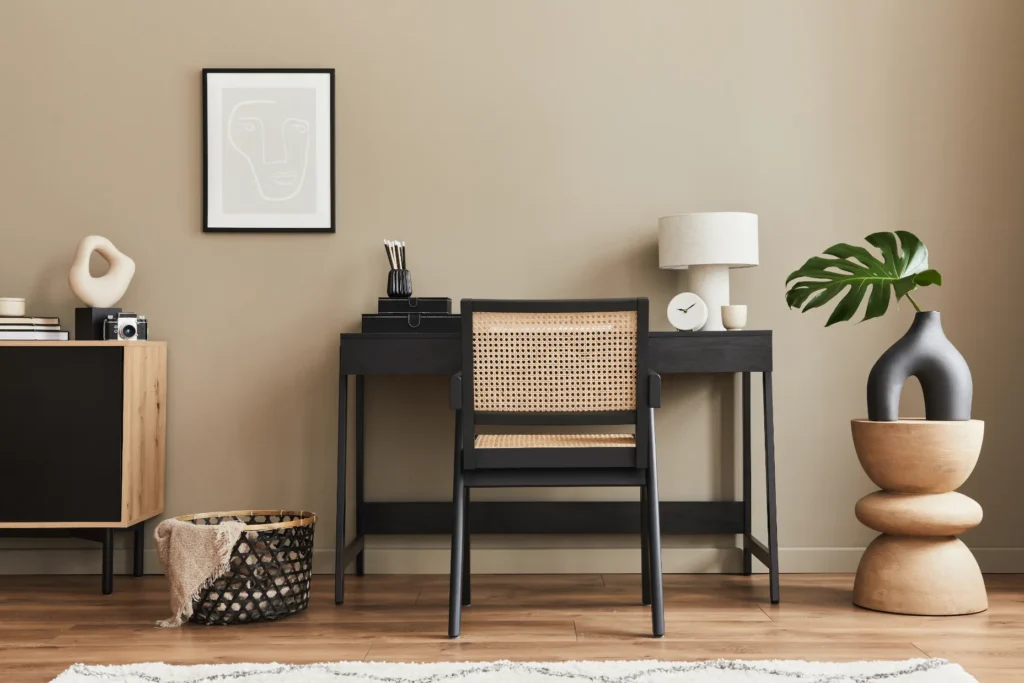
In the intricate choreography of interior design, the quest for a harmonious space extends beyond aesthetics to the very air we breathe. Efficient Heating, Ventilation, and Air Conditioning (HVAC) systems emerge as silent conductors, orchestrating temperature, air quality, and overall comfort within our living spaces. Let’s submerge ourselves in the realm of advanced HVAC systems, exploring how they reshape energy consumption and contribute to optimal indoor conditions.
Energy-Efficient Heating And Cooling Alternatives
Advanced HVAC Systems: Embark on a new era defined by advanced HVAC systems, seamlessly intertwining technology with sustainability. These systems transcend conventional counterparts, optimizing energy consumption while delivering superior heating and cooling performance. Envision a contemporary, advanced HVAC system that maintains your space at the desired temperature and does so with a significantly reduced carbon footprint.
For interior design professionals, integrating such systems into projects isn’t just a recognition of innovation but a commitment to creating spaces prioritizing both comfort and eco-conscious living. A recent residential project saw a remarkable 30% reduction in energy bills after transitioning to an advanced HVAC system, underscoring the tangible benefits of energy-conscious design.
Zoning and Programmable Thermostats: Efficiency converges with personalization through the introduction of zoning and programmable thermostats. Zoning facilitates the division of spaces into distinct heating and cooling zones, directing energy precisely where and when it’s needed. Paired with programmable thermostats, occupants can establish temperature schedules aligned with daily routines, optimizing energy usage.
This dynamic duo not only enhances comfort but also significantly contributes to energy savings. In a commercial office environment, the implementation of zoning and programmable thermostats resulted in a noteworthy 20% reduction in heating and cooling expenses, showcasing the adaptability of these technologies in diverse settings.
Impact On Indoor Air Quality And Comfort
Health Benefits of Advanced HVAC Systems: Advanced HVAC systems transcend mere temperature control; they play a pivotal role in nurturing indoor air quality. Modern systems are equipped with advanced filtration and ventilation features that reduce allergens, pollutants, and airborne particles.
Envision a living space where the air isn’t just comfortable but also promotes respiratory health, contributing to a healthier and more enjoyable indoor experience. A residential project incorporating an advanced HVAC system witnessed a significant decrease in airborne allergens, leading to improved respiratory health for the occupants.
Creating Optimal Thermal Conditions: The efficiency of HVAC systems isn’t solely about maintaining a set temperature; it’s about creating optimal thermal conditions. Picture a workspace where the temperature seamlessly adapts to varying occupancy levels and external weather conditions.
Advanced HVAC systems strike this delicate balance, ensuring occupants experience consistent comfort throughout the day. A smart office building integrated with advanced HVAC technology observed a boost in employee productivity due to consistent thermal comfort, highlighting the intersection of well-being and efficient design.
Window Treatments For Energy Conservation: Balancing Style And Sustainability
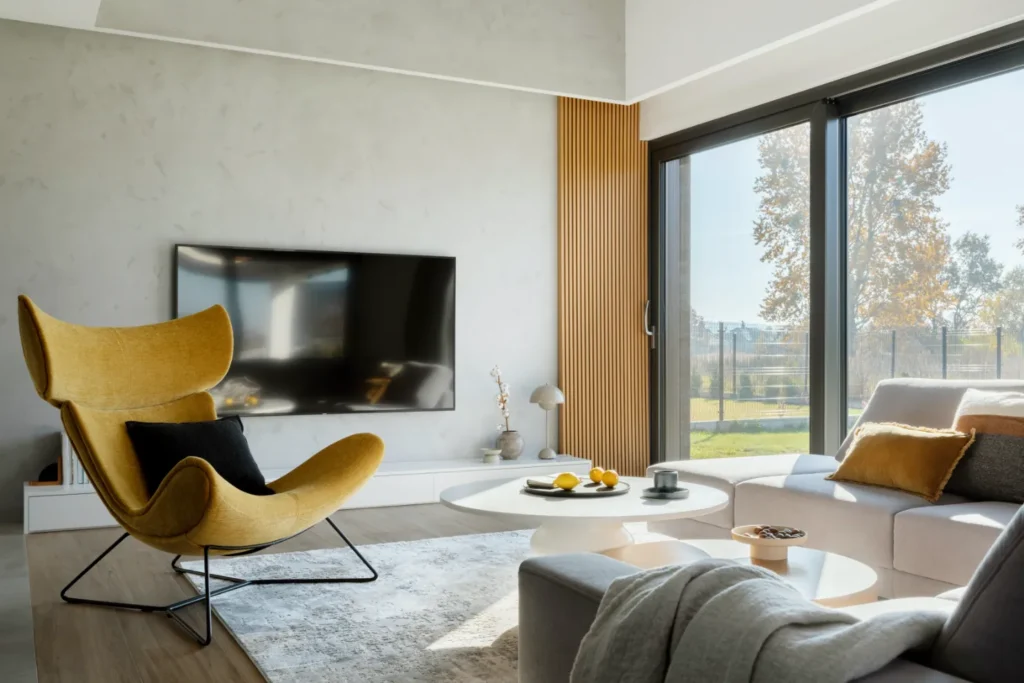
In the canvas of interior design, windows are more than mere portals to the outside world; they are opportunities to optimize energy efficiency. Window treatments play a pivotal role in this delicate balance, offering a fusion of aesthetics and functionality. Let’s explore the significance of proper window treatments and delve into energy-efficient options that harmonize comfort and style.
Importance Of Proper Window Treatments
Insulation and Temperature Regulation: Proper window treatments act as guardians against temperature extremes, providing insulation that keeps interiors cozy in winter and cool in summer. Insulated curtains and blinds act as a barrier, preventing unwanted heat loss or gain. Imagine a living room adorned with thermal curtains, where the ambiance remains comfortable regardless of the season.
This not only enriches the overall living ambiance but also aids in decreasing energy consumption by alleviating the demand for heating and cooling systems. A residential project incorporating thermal blinds witnessed a noticeable decrease in heating expenses during winter, showcasing the tangible impact of strategic window treatments.
Natural Light Optimization: Balancing energy efficiency doesn’t mean sacrificing natural light. Proper window treatments allow for the optimal utilization of natural light, reducing the need for artificial lighting during the day. Picture a workspace where the delicate dance of sunlight enhances productivity without compromising energy conservation.
It’s about creating an environment where the benefits of natural light are harnessed intelligently. In a home office setting, sheer curtains were strategically chosen to diffuse sunlight, creating a well-lit space that minimized the need for additional lighting fixtures.
Energy-Efficient Window Treatment Options
Insulated Curtains and Blinds: Insulated curtains and blinds are stalwarts in the realm of energy-efficient window treatments. These solutions are crafted with materials that provide an additional layer of insulation, preventing heat transfer. In colder months, they retain warmth indoors, while during the summer heat, they serve as a shield against the sun’s rays.
It’s a simple yet effective strategy to maintain a comfortable indoor climate while curbing reliance on heating and cooling systems. An eco-conscious restaurant implemented insulated curtains, not only elevating the dining ambiance but also contributing to reduced air conditioning usage.
Smart Shading Solutions: Embrace the synergy of technology and design with smart shading solutions. Automated blinds and shades can be programmed to adjust based on the time of day, optimizing natural light and temperature. Imagine a bedroom where the shades gradually close in the evening for privacy and open in the morning to welcome natural light.
It’s a seamless integration of convenience, style, and energy efficiency. A hotel incorporated smart shading solutions, enhancing guest comfort while demonstrating a commitment to sustainability through reduced energy consumption.
Conclusion
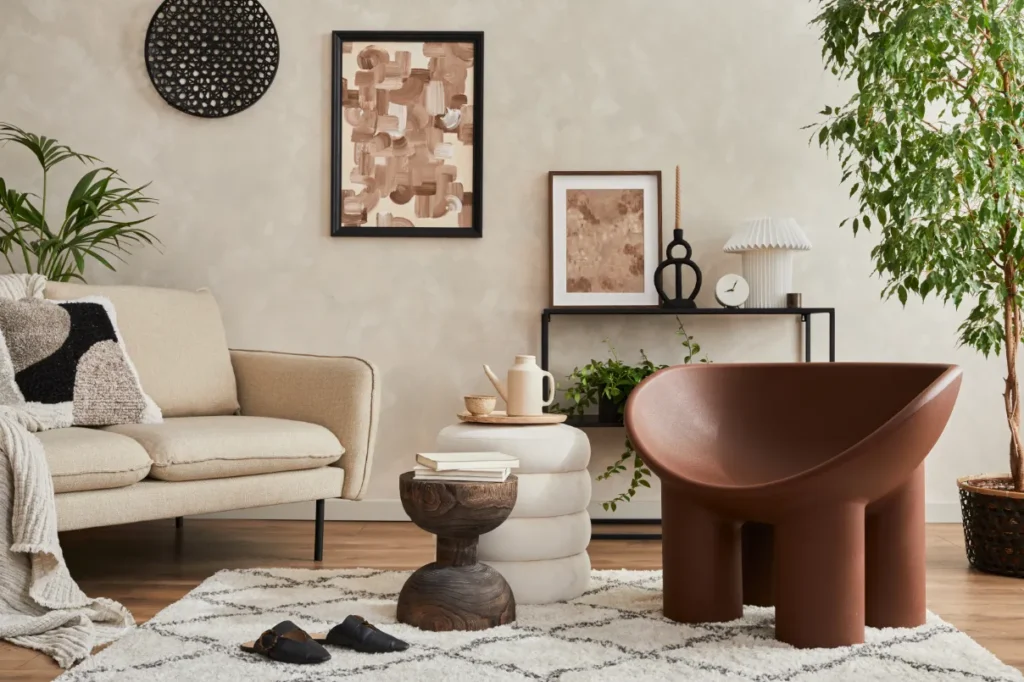
In the intricate realm of interior design, the harmonious fusion of energy-efficient technologies stands as a symbol of cutting-edge innovation. From advanced HVAC systems to mindful window treatments, the path towards sustainable living spaces seamlessly marries aesthetics with practicality. Design professionals and homeowners now converge at the crossroads of style and environmental mindfulness.
Embracing technologies that elevate comfort, prioritize health, and minimize ecological footprints, the trajectory of interior design transcends visual allure to conscientiously uphold sustainability—a manifestation of creativity that not only enriches the human experience but also nurtures our shared planet.
The White Frame is not just another interior design and build firm, we are proud to offer you the professional service levels of global standards and deep respect for both contemporary and traditional interior design, Headquartered in Gurgaon, and extend our services across diverse cities, including Gurgaon, South Delhi, Delhi-NCR, North India, Mumbai, Chandigarh, Jaipur, and Agra.
Explore some of our work here!
Cheers to the creation of your dream home!




